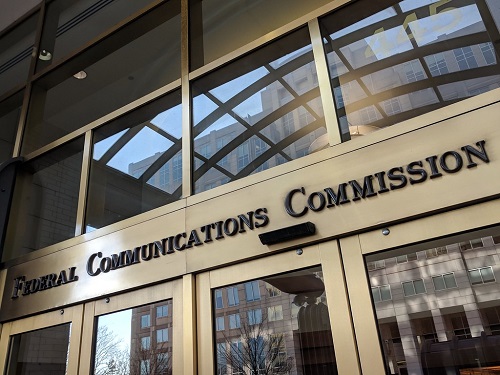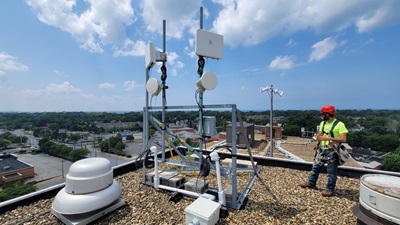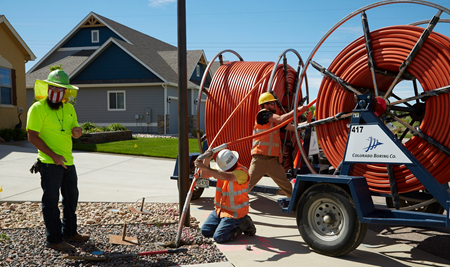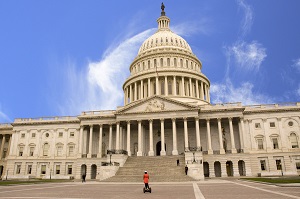Emma Gautier: Addressing Digital Discrimination Will Take More Than Policing ISPs
It is crucial to prioritize community solutions where service is offered in partnership with trusted community institutions.
Broadband Breakfast

This is a walk and chew gum moment for broadband-for-all advocates. On the one hand, the Federal Communication Commission new digital discrimination rules have the potential to reign in egregious examples of digital discrimination. On the other hand, the new rules still fall short of putting forward the kinds of structural solutions necessary to address underinvestment in communities where federal infrastructure dollars may never reach.
Last week, the FCC published its final digital discrimination rules, giving the agency the authority to penalize Internet Service Providers whose policies have a “disparate impact” on historically marginalized communities. The Infrastructure Investment and Jobs Act, passed by President Biden in 2021, included a mandate directing the FCC to develop “rules to facilitate equal access to broadband internet access service, taking into account the issues of technical and economic feasibility presented by that objective, including—preventing digital discrimination of access based on income level, race, ethnicity, color, religion, or national origin.”

After hosting listening sessions and inviting public comment, the final ruling ultimately defined digital discrimination as “policies or practices, not justified by genuine issues of technical or economic feasibility, that (1) differentially impact consumers’ access to broadband internet access service […], or (2) are intended to have such differential impact.” Such an approach authorizes the FCC to penalize providers even if it can’t identify instances of intentional discrimination.
Initial Responses to the Ruling
As expected, the big monopoly incumbents all but exploded over the FCC’s decision to measure discrimination based on disparate impact, arguing that the new rules go beyond what the IIJA intended when it granted the agency authority to prevent digital discrimination and facilitate digital equity. A secondary argument they make is that the disparate impact approach micromanages business and will discourage providers from investing in certain areas for fear that they will be penalized for profit-seeking behavior.
Meanwhile, public interest groups and members of Congress have lauded the ruling for its focus on disparate impact, a standard advanced by the disability community. In comments filed with the FCC, the American Association of People with Disabilities emphasized how people who are discriminated against experience the effects of discrimination whether or not it was the result of conscious bias:
- “For decades, the disability community has noted that discrimination occurs unintentionally and often results from seemingly neutral policies. Too often, disabled people experience discrimination not because of malicious intent or explicit exclusion within programs or policies but because the disabled people were simply not considered in the first place.”
How Much Practical Impact Will The Rules Have?
Despite industry pushback, it shouldn’t be lost on anyone that the rules have limitations that raise questions about the practical effect they will have. It is unclear, for example, what exactly the FCC will allow on the basis of “economic feasibility.” The rules don’t outline how the Commission will distinguish between “economic feasibility” versus profit-maximization or whether such a distinction will be used to adjudicate rulings. All we know is that the Commission will evaluate each instance of alleged discrimination on a case-by-case basis, relying on precedent set by other ISPs to determine what is technically and economically feasible and what is not.
A detail that has been largely overlooked is that to find an ISP responsible for digital discrimination, the rules say, disparate impact must be traced back to a “specific policy or practice that is causing the disparity.” Policies and practices adopted prior to when the rule became active are not subject to repercussion.

Another reason to question the rules potential impact is that historically the FCC doesn’t have a strong track record holding big cable and telecom companies accountable. While large providers have been found to neglect infrastructure upgrades and charge higher prices for lower speeds in low-income neighborhoods, it would be uncharacteristic of the agency to crack down on these massive companies. There is very little information from the FCC about what enforcement will really look like; the ruling only notes that “possible violations will be investigated by Commission staff using our standard investigative toolkit, and all penalties and remedies will be available when we determine that our rules have been violated.”
Concerns have also been raised around the transparency of the complaint process the FCC will use to help it identify discrimination. As The Markup points out, “complaints [filed by the public] won’t necessarily begin a formal adjudication process against the ISP, but they can be used as a basis for the FCC to begin its own investigation into the provider’s conduct.” There are no transparency mechanisms laid out in the ruling, which will no doubt make it easier for the FCC to sweep complaints under the rug.
Another wildcard that could come into play is how the U.S. Supreme Court rules on a case now before it that, while focused on the SEC, has implications for federal agencies ability to enforce administrative judgements.
A Surface-Level Response to a Deeply Structural Issue
As other public interest groups argue, it is more important to advocate for the needs of communities than it is to try and untangle the intentions of ISPs. And truly centering communities begins with an honest recognition that digital discrimination is deeply structural – something the FCC and federal lawmakers have been reluctant to acknowledge.

It’s a challenge that merits a ground-up solution that goes beyond giving the FCC theoretical authority to penalize providers. Instead, it would be more productive to focus on facilitating community investment that will meet the varying needs of households that aren’t yet connected.
The ruling implicitly assumes the Broadband Equity Access and Deployment Program (BEAD) will lead to investment in areas traditional providers have not found economically attractive, and that together, the digital discrimination ruling and BEAD work to make Internet access available for all.
Unfortunately, many of the communities that have been impacted by digital discrimination are urban areas that are unlikely to see BEAD dollars, as the infrastructure law was designed to funnel funds to mostly rural communities. Add to that the flawed FCC maps, which vastly overstate coverage, speeds, and competition, and it will be extremely difficult if not impossible for BEAD funding to reach most urban areas deemed “served” by monopoly providers.
The reality is that it can be profitable to discriminate, as the big monopoly ISPs are set up to first and foremost serve their shareholders, not the communities from which they derive their profits.
These companies are structured to offer service in areas where they will see a quick return on investment, which often means the parts of town that most need to be connected are left unserved or grossly underserved.
Imposing penalties on discriminatory ISPs could potentially scare some into upgrading parts of networks or eliminate glaring price disparities in historically marginalized neighborhoods. But without actual policies in place that encourage competition and universal access to high-quality Internet, the impact of the new digital discrimination rules will likely be limited.
It should also be noted that monopoly ISPs wield tremendous power over markets in a multitude of ways, not the least of which is their well-documented assault on competition. These companies fight tooth and nail to block new ISPs from entering the market, leveraging their considerable influence to convince lawmakers that there is no urban broadband problem that merits public funding. This has worked to persuade Congress that new infrastructure funding should target rural communities and leave the larger urban markets to the big incumbents, even if the service they offer is expensive and of poor quality. Their influence can also be seen in the federal government’s failure to take competition into account, which is indisputably linked to the quality of broadband service and price offered in a particular area.
Real Solutions Will Be Community-Rooted
After such major outcry among major ISPs responding to the digital discrimination ruling and its “disparate impact” approach, it’s difficult to imagine these companies bringing quality, affordable broadband service – as well as digital equity support – to communities that need it. It’s not just cynicism to point that out, as these very same companies argue that the ruling will “chill” investment, which doesn’t exactly instill confidence that they intend to invest in communities most in need of service.

There are approaches, however, that do aim to connect the unconnected in ways that are not squarely focused on a quick return on investment. Municipal broadband, partnerships with small community-minded ISPs and other forms of publicly-owned, locally-controlled networks have demonstrated a way to provide universal, affordable service across an entire community, as well as the programs to address other barriers to broadband adoption such as providing devices and digital skills training.
In a letter to the FCC regarding the digital discrimination proposed rulemaking, a group of digital equity initiatives and public interest organizations including ILSR elevated an approach to closing the digital divide that focuses on “building trusted relationships, allowing communities to own infrastructure, build capacity, and experiment with solutions, and allowing for community-driven decision-making and knowledge-building.”
It is crucial to prioritize community solutions where service is offered by trusted entities or providers operating in partnership with trusted community institutions. The public comment goes on to emphasize that “challenging digital discrimination cannot be solely concerned with giving more Black, Brown, tribal, and people in rural areas broadband run by large corporations just to increase their upload and download speeds. In fact, this approach simply exposes our people to more data surveillance and dependency.”
Continuing to Push for Community Control

Biden’s original broadband vision did call for “support for broadband networks owned, operated by, or affiliated with local governments, non-profits, and co-operatives—providers with less pressure to turn profits and with a commitment to serving entire communities.”
The Biden administration also intended to promote “competition among internet providers, including by lifting barriers that prevent municipally-owned or affiliated providers and rural electric co-ops from competing on an even playing field with private providers.”
Such an approach recognized that where community broadband providers have been established, subscribers get fast, reliable service at competitive rates. While this approach offered some hope that Biden’s broadband plan would invest in boosting competition among providers, the plan was substantially watered down before it passed in Congress.

As a result, few municipal broadband projects outside of rural America are likely to receive funding under BEAD, IIJA’s largest bucket of broadband infrastructure money. The failure of Congress to prioritize community broadband is evidence of the political tradeoff made by Democrats to get the law passed. And while it’s better to penalize providers for egregious discrimination than to continue allowing them to exploit communities in an unfettered pursuit of quick profits, it’s important to keep pushing for more structural solutions.
Now that federal law and policy-makers have set the parameters, it seems wise to direct our attention towards the local level.
The digital discrimination ruling could, for example, give cities leverage in combating digital discrimination at the local level, or at least provide an opportunity to offer up better data that illustrates where and in what contexts discrimination is occurring.
We hope to see cities, public interest groups, and broadband-for-all advocates use the new FCC rules to highlight why certain communities face chronic underinvestment while making the case that community-minded ISPs and non-traditional providers can offer high-quality, affordable broadband to the communities who most need it.
Emma Gautier is a Researcher with ILSR’s Community Broadband Networks Initiative. She supports data collection and analysis within the broadband initiative. Emma recently received a BA in Women’s and Gender Studies from Carleton College, and since graduation has been working in research, advocacy, and political organizing for social and environmental justice. She is interested in the synthesis of research and on-the-ground action in communities. This piece was originally published on communitynets.org on November 30, 2023, and is reprinted with permission.
Broadband Breakfast accepts commentary from informed observers of the broadband scene. Please send pieces to commentary@breakfast.media. The views expressed in Expert Opinion pieces do not necessarily reflect the views of Broadband Breakfast and Breakfast Media LLC.









Member discussion